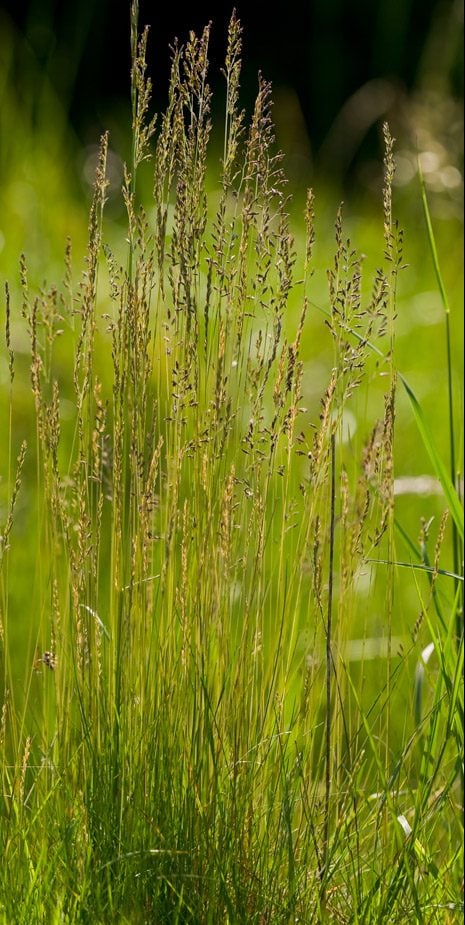Description
Sheep’s fescue is a short slow growing perennial grass with fine, green or grey-green bristle like leaves. Individual plants form dense tufts which can be almost rosette like in form. They do not spread vegetatively by runners but plants can merge together when grazed or mown to form mats or turf. The flowering heads are usually less than 45cm in height, branched, tending to be less open and somewhat one sided compared to other fescues, especially in the seed heads.
Habitat Information
Sheep’s fescue is a stress tolerant, slow growing grass. It is widely distributed in the British Isles on poor, shallow, usually well-drained soils. It is good at coping in stressed environments, but less able to compete against taller more vigorous grasses particularly on fertile soils. It is a very variable and adaptable plant species and can be found in both acid and calcareous grassland in a wide range of situations from sea cliffs to mountains. It occurs most extensively in unproductive upland hill pastures where it can be the dominant grass.
Growing Information
Sheep’s fescue seed can be sown at any time of the year when soil conditions are suitable. It is a slow growing grass and so takes time to establish from seed. Except on very poor thin soils (eg green roof schemes) it is best sown as a component of a mixture where initial ground cover can be provided by other companion grass species.
Sheep’s fescue plants are adapted to cope with drought stress by having tightly rolled narrow leaves which helps to reduce water loss. They also produce long-lived leaves and put on less growth through summer. It however does not have deep roots like many other drought tolerant grasses, so is prone to die back in conditions of prolonged drought (for example as might occur in summer on a shallow roof substrate, without irrigation, in Eastern England). Sheep’s fescue grows and sets seed early in the season, usually before drought sets in; so where die back does occur it is often able to regenerate from self-sown seed.
Sheep’s fescue can withstand tight grazing and will tolerate moderate trampling. It is not the most productive grass, but its foliage when young is quite nutritious and readily grazed by sheep and is so is important economically as it is the main grass of grazed hill pastures across swathes of upland Britain.
It will tolerate both regular and close mowing. Its semi-rosette growth form and tough wiry leaves however mean that it does not form a very neat turf if mown as an ornamental lawn, so is more useful in informal grassland on poor soils. Like all fescues the tight wiry siliceous leaves resit all but the most keenly sharpened scythe blade. As it only forms a minor component at the base of a meadow grass sward this is rarely a problem in practice.
Mowing or grazing is usually important to moderate competition from taller vegetation; however on the poorest most stressed environments (such as green roofs) it can persist for many years with no need for maintenance at all.

